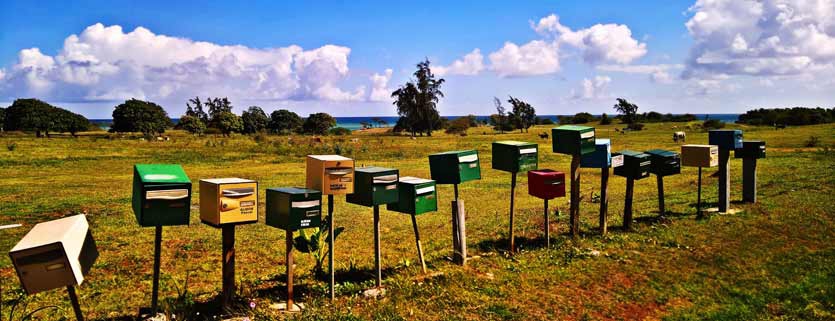Caribbean LNG – the steel pan paradigm
The Caribbean would be the perfect region for LNGification. It has not happened yet which is a shame as the immaculate pearl it evokes in our phantasies has been tarnished. But things are about to change, very dramatically so.
Many years back, when I had first contact with LNG I was told that it was merely a transport mode of Natural Gas. In that sense, it was never to be more than an opportunity to bring gas to places that were not accessible by pipeline. It was generally assumed that the pipeline option must have been considered technically, economically, or politically impossible or unattractive.
Things have come a long way since then. LNG became much more than just the physical embodiment of Natural Gas at very low temperatures. Natural Gas in the form of LNG has allowed many countries to dramatically improve their environmental footprint by replacing costly and dirty oil derivatives with comparatively cheap gas. Japan is not the very least of them.
Some regions on the global map look perfect for LNG. Instead, they must have been left out. The Caribbean is just one of them. Few other regions in the world evoke paradise so perfectly with their white beaches, coconut palms, and crystal clear water bathed in eternal sunlight with hot rhymes, rum, and eternal party. It’s a major tourism destination and frankly, many of the countries there make a handsome living by catering to the clichés and the visitors it draws.
All that makes it even more astonishing for me is that the region still produces the bulk of its electricity from some of the worst hydro-carbonaceous fuels available on the planet. Its residual fuel burning big style and lots of diesel generation.
Aside from all the filth this produces, which by the way tarnishes the Caribbean’s image as an immaculate pearl, it’s also hugely expensive to the local economies. With extremely limited opportunities for hydropower, no nuclear plants, and frequent hurricanes making windmills and solar difficult, those islands had little choice so far.
Why in hell has no one thought of bringing Natural Gas to them? The biggest reason of all was the size of a single island. Taken alone, most islands are closed ecosystems each of their own. And each of them is also way too small for a traditional LNG receiving terminal to make any economic sense. The amounts of gas required by an island such as Guadeloupe or Barbados are so small, that a single regular LNG cargo would go a long way.
Pipelines are difficult to lay as the region is seismically active.
To serve those islands with today’s standard LNG catering, they would have to be able to take reception of a full LNG tanker cargo and here we are talking about volumes of 138.000 m³ of LNG or more in a single batch. That requires a tank that can hold these volumes at once and this tank would even have to be significantly bigger again as operational flexibility would have to come out of it.
Rare is the place that requires power in an even band. All seasonality, all structure in demand would have to come out of that tank. That would make for a pretty big tank in some cases. Those monsters are hundreds of millions of USD in immobilized investment. No wonder very few places were big enough for it to make sense.
That means really big CAPEX which would be grossly out of proportion with what a small economy could afford. A catch eleven. Do you imagine such a beast on every one of the myriad islands? Not enticing.
Luckily for the Caribbean, things are about to change significantly. Mid and small-scale LNG distribution was in its infancy for the longest time. Now it has become a practical reality. And incidentally, with the enormous rise of shale in the US, a reliable nearby and comparatively cheap and stable source of gas is available. How does it work?
For a start, LNG needs to lose its “built for purpose” smell. Inventing the wheel from scratch every time someone wants to put an LNG project together is not going to cut it here (and in many other regions of the world). I have posted on the problems generated by really big mega infrastructure before. If one wants to develop a region of many smallish pockets of gas customers (as islands are), he needs to develop a standardized system by kicking a small pilot to life.
The pilot is typically a small customer with very stable needs. This will not cost too much, will not raise too many alarm bells with the big boys, and will nicely prove the concept. The glossiest brochures and the fanciest movies or presentations will not beat the convincing power of the real thing swimming right before your nose.
Besides, no one wants to be first.
So, now there is a small vessel plying the waters of the Caribbean delivering small amounts of LNG to a stable customer such as a CCGT. Hardly exciting. Others always want to imitate when something works. And they also want it bigger, better, more flexible, you name it. It’s like the spark that made amino acids recombine and kick-started life on the planet. It’s the genesis of a new LNG world.
Once there are several similar “milk runs” something nice happens. As all of them are in close proximity and the different bits and pieces of the (not yet existing) system are similar, cooperation starts to make sense. The different fields of the steel pan all produce slightly different sounds. So will the different islands of the Caribbean all have slightly different consumption profiles and needs? That means something that loosely works together springs into place.
On the supply side, there will be small and mid-scale liquefaction terminals in the US, Mexico, Colombia, and possibly even Venezuela. Trinidad and the large GOM terminals will start developing the capability to serve those markets. And there will be bulk breaking of large cargos from Africa and the Middle East.
Transport will not only be conducted with small vessels but also with LNG barges which work like packets of LNG that can be pushed and towed where you need them. They will double function as transport and storage medium. If those barges are standardized in size they can be filled with LNG and laid up for short-term storage. The LNG remains transportable as it’s still not in the shore-based tank. If it’s needed somewhere else it can be brought there with little notice and effort and cost.
The whole disorganized system will function not unlike the data packets internet protocols are sending around. It’s a bit like a network, or a mesh of LNG supply points, flexible LNG storage and transport, and of course at the end the reception points which can be shore-based installations or also barges with power generational capabilities on top.
There is no limit to what can be done in time but someone needs to do the first step. The internet started out as a very few interconnected computers as well. Time and innovation brought about the incredibly big and complex internet we know today. It was a long and chaotic development, not a big bang. Not even a straight line. And very little planning.
Oh, did I forget? In a previous post, I have not left a good hair on US shale gas as LNG export ambitions. With this little exception. US shale gas could allow the Caribbean to break its addiction to dirty oil. The world would get one of its pearls to shine again. But as usual, the path is a stony one.
This could work for many regions. The Caribbean makes a nice start.


















You are preaching to the choir! The chang to LNG must be economically viable to the small scale client. The sourcing end needs to be fixed, not the receiving end getting world scale stuffed down their gullets.
We are still not in a liquid market, nowhere near that. So its not an option to fix one end or the other. Suppliers don’t have the impression that anything is wrong at all and as long as they mint money they are right. No one has an obligation to fix the woes of the world. LNG is still a very collaborative business. Its seller and buyer together. Its cooperation. Its back to back. I agree that sellers should look at other options than just delivering to Asia. But buyers must also do their bit. Now is the time.
It seems there are a lot of people working on that plan. there is a nice new source of LNG in Florida that is now permitted and looking for customers to contract for liquifaction and storage capacity at http://www.floridiangasstorage.com With truck loading capability using ISO tanks to move manageable quantities of LNG to specific users is close to becoming a reality without the mega capaital cost for big infrastructure. Hopefully this plan moves ahead soon.
I was in Florida for a whole while and saw the scale of marine traffic there. It could all convert to LNG and frankly, what’s true for the islands is true for Florida as well. The only difference is that Florida has pipe gas, the islands not.
Just picking up on this thread if its ok. In the US the state of deleware has now local fossil resource. The vast majority of all power in the state is generated out of state at a premium. Before the crisis they were among the leading contenders to install off shore wind, and have a good business case. Funny enough, is that in neighboring Maryland there is the Dominion Cove Point LNG terminal, which now says it would like an export permit!
Why Delaware doesn’t “Go Gas” with a direct link from cove point and create some kind of distributed energy system is a mystery to me. It seems strange that neighboring states don’t go after the low hanging fruit before risking something like turning Cove Point into an Export Terminal.
Thank you. Interesting point. On a general basis, LNG is pretty expensive when held against pipeline gas and because of the shale revolution in the US, there is plenty of that. I don’t know Delaware power prices in particular but because of cheap shale, power generation should be fairly competitive there.
LNG makes a lot of sense if you have to produce power from expensive Middle Distillates or super dirty (and still not cheap) Residual Fuels. I have a hard time imagining the premiums Delaware pays for its power equal the premiums it would have to pay for LNG. If Cove Point wants to sell LNG and they get approvals and find willing buyers, then be it. I have posted on the prospects of US LNG export before but again, Delaware would be better off getting more pipeline gas and producing power if this is cheaper than importing power.
Replacing diesel in transportation (and other uses) on the other side makes sense. In transport this can only be done with LNG and here the Cove Point argument makes perfect sense to me. But I will post on that later.
Do not give up Rudy. Want to talk Venezuela?
ALL THE BEST,
Fernando, I am always happy to talk with you.
If you like talk about Venezuela nat gas …. let´s talk…
Venezuela certainly would be a top contender for a supply base and this would also be economically very interesting for the country. I am not currently working on a Caribbean project and act as an outside observer. But I would love to talk. Whats your email.
Hello I readed your post with very interes. I live in Venezuela, the Caribbean islands are my favorite neighbors, especially during the vacations season.
I think the biggest obstacle to realize the idea of supply of LNG to these small islands, would be the initial investment that governments should do if you take the option to build a traditional regasification terminal.
The barge transportation would be a good solution to minimize costs. Already some Colombian companies have announced their plan to supply LNG to the Caribbean through this way.
Greetins from Venezuela.
For every successful LNG project there are more than 10 duds. That’s a reality we have to deal with and its not limited to any region on earth. I agree that its the initial price tag that brings things down – sort of a hen and egg problem. But modular applications enable mass production of equipment which should bring prices down.
There are some real exciting projects underway (not only in the Caribbean) and I expect some of them to begin operating within a few years from now.
Rudolf, Carib Energy will start shipping small scale to the USVI and Puerto Rico in 40ft ISO tanks by May/June 2013. As well we have off take agreement with a new LNG liquifier coming on stream in South Florida end of 2014 beginning of 2015 which has has FERC approvals and Section 7C for export. Carib Energy has the FTA License and NFTA waiting for final approval at DOE. The first train will be 300,000 Gallons per day and we have an off take of 200,000 + LNG Gallons. So believe me the small scale will start. As well there are some CGL that will happen in the islands in Jamaica and other smaller islands. This is Compressed Gas Liquids and it looks to make a major impact in the region. So your dream of LNG in the Caribbean for the smaller islands is a reality.
Greg, I cant wait to see it operating. Your business model certainly appeals to me. Keep me posted.
We will, this has been a long road to get here, but it is no longer a pipe dream but a deliverable option to the commercial and industrial customers who suffer the consequences of government owned utilities.